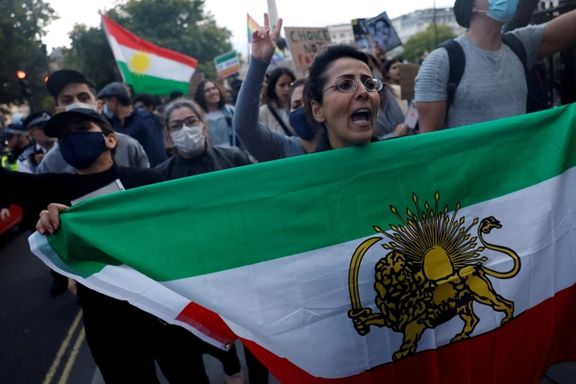Iranian Patriotism and Its Difference from the Far Right

The true essence of Iranian patriotism is occasionally obscured or mischaracterized in Western media, contributing to a lack of understanding about its distinctive qualities.

The true essence of Iranian patriotism is occasionally obscured or mischaracterized in Western media, contributing to a lack of understanding about its distinctive qualities.
This article explores the unique aspects of Iranian nationalism, which has often been misunderstood as akin to the xenophobic and racist right-wing movements prevalent in Western discourse. Understanding this distinction is crucial for a deeper appreciation of Iran's socio-political landscape and its historical resistance against both Eastern and Western hegemonies.
Nationalism, or 'patriotism,' is known as the most liberal political discourse in contemporary Iranian history. This cultural and political discourse stood firmly against totalitarian ideologies like Marxism and Islamist ideologies, preventing Iran from falling into the Communist trap during the turbulent decades of the Cold War. Nevertheless, this movement was defeated in 1979 by an alliance of Communists and Islamists, leading to the overthrow of Mohammad Reza Shah Pahlavi.
Opponents of Iranian nationalism consisted mainly of two anti-Western currents: political Islam and Marxism. Khomeini vehemently condemned nationalism and ordered the removal of nationalist symbols from institutions and political currents. Iranian Marxists, prior to the 1979 revolution, had carried out terrorist attacks against symbols of Western influence. These groups contributed to the overthrow of the Pahlavi regime, which had granted significant freedoms to women and religious minorities. During the Pahlavi era, women and religious minorities enjoyed extensive freedoms, and positive relations existed between Iran and Israel. However, Pahlavi's opponents targeted American diplomats and fought against women's rights, while many nationalists continued to promote Western culture and the country's development.
To better understand the profound differences between Iranian nationalism and xenophobia, it is necessary to consider the ideas of the Constitutional Revolution era and the years that followed. Mirza Aqa Khan Kermani and Seyed Hassan Taqizadeh, two prominent Iranian thinkers, were committed to structural reforms and modern Western teachings. Kermani, a pioneer of the Constitutional movement, emphasized the need for Iran to distance itself from tyranny and superstitions, while Taqizadeh advocated modernization inspired by Western democracies. Both emphasized the importance of education, freedom of expression, and the media as foundations of democracy. This line of thought, after a relatively long hiatus during the 1960s and 1970s, under the intellectual influence of leftists and Soviet enthusiasts, has been revived in recent decades among Iranians and has become the focus of their struggle against the Islamic Republic.
Western nationalism arose after the collapse of the Holy Roman Empire and the establishment of nation-states in Europe, but Iranian patriotism is the result of thousands of years of nation-state existence in Iran and the peaceful coexistence of different ethnic groups side by side. This type of patriotism, unlike Western nationalism, which was aggressive in the age of post-Renaissance nation states, has been defensive and not only served as a barrier against extremist Islamism, but also a factor for Iran's territorial unity and national sovereignty.
During the Pahlavi era, which was founded on Iranian patriotism, religious minorities such as Jews, Christians and Baha'is enjoyed extensive freedoms that were unparalleled in the Middle East. These freedoms were significant as they demonstrated a unique aspect of tolerance and progressive policies in the region. These minorities were not only free in worship but many entrepreneurs belonging to these communities also held prominent economic positions in Iranian society. The Family Protection Law, enacted during the Pahlavi era, was one of the most progressive laws in the Muslim world regarding divorce and the age of marriage in favor of women, and Iranian women obtained the right to vote before they did in some European states, including Switzerland. In the field of arts, women often had more rights than men. The Iranian LGBT community also enjoyed significant freedoms and played an active role in the artistic field. For example, a year before the Islamic revolution in 1978, when the famous gay designer Bijan Safari got married, Empress Farah Pahlavi sent a bouquet of flowers on her behalf as congratulations.
In the past 15 years, the sense of Iranian patriotism has grown significantly, and nationalists have re-emerged as a central force in recent protests against the Islamic Republic. Since December 2017, Iran has witnessed five major nationwide uprisings during which people have widely chanted nationalist slogans. These slogans include: "From Kurdistan to Tehran, my life for Iran," "Reza Shah! Bless your soul," "Woman, Life, Freedom; Man, Homeland, Prosperity," "Sanandaj, Zahedan, the luminaries of Iran," "We fight, we die, we take back Iran," "Neither Gaza, nor Lebanon, my life for Iran," and "An Iranian dies but does not accept humiliation." These slogans reflect the spread of nationalist sentiment and patriotism among the Iranian people and their desire to preserve their national identity and the independence of their country.
In conclusion, Iranian patriotism, deeply rooted in a rich cultural and historical heritage, contrasts sharply with the often reductive and skewed portrayals found in Western media. This patriotism is marked by its defensive and inclusive nature, reflecting a nationalism that promotes unity and resists hostile pressures rather than fostering exclusion. By appreciating these nuances, the international community can engage in a more informed and respectful dialogue about Iran, recognizing its unique national identity and the aspirations of its people for freedom.